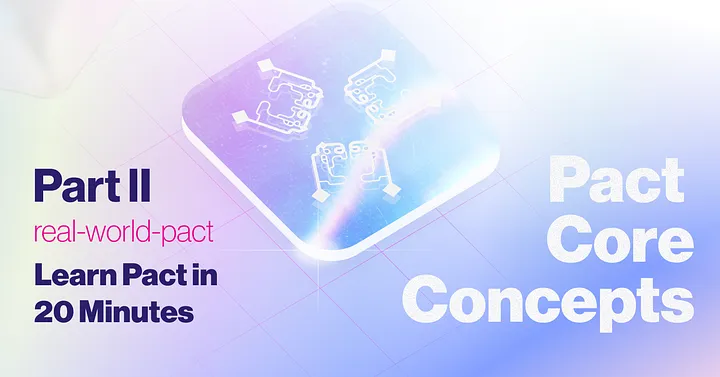Pact Core Concepts Part II— Learn Pact in 20 Minutes
The Pact Core Concepts series is a companion guide to the Real World Pact repository, written by Thomas Honeyman, senior engineer at Awake Security. The series teaches the essential concepts needed to write and test Pact programs on the scalable Chainweb blockchain. Part II of the series, Learn Pact in 20 Minutes, is a crash course in the Pact programming language.
To become proficient in a new language you need to read a lot of it — but you need to know the language to understand what you’re reading! Learn Pact in 20 Minutes introduces you to Pact via dozens of snippets of codes that you are likely to encounter in the real world. These code snippets cover most of the Pact features you will use in your day-to-day smart contract development, and you can run each snippet yourself in a Pact REPL to follow along.
The Pact programming language is specifically designed for smart contract development. That design means that powerful features like fine-grained access control, sophisticated multi-signature authorization, on-chain data storage, cross-chain state transfers, and formal code verification are a natural part of Pact programming. Other design decisions — like non-Turing-completeness, which disallows loops and recursion, or fixed-precision decimals, which don’t overflow when doing math — help eliminate entire classes of bugs present in other smart contract languages.
This makes Pact an ideal language for smart contract development. It also means that Pact will look unfamiliar to developers who use languages like JavaScript, Python, Solidity, and others. Learn Pact in 20 Minutes helps bridge the familiarity gap by showing you plenty of snippets of real-world Pact code you’re likely to encounter when you read the source code of any major Pact project.
The article covers, among other things:
-
The basic types available in Pact, such as strings, decimals, and keysets
-
How to annotate values with types — and create your own types
-
How to define functions, tables, and capabilities
-
How to format strings
-
The difference between “top-level” code and “module-level” code
-
How to read data from a transaction’s JSON payload
-
The most common utility functions you’ll use in code, like map, filter, and fold
-
How to work with databases, from creating tables to reading and writing data
-
The most common ways to control access to sensitive data How to cause a transaction to fail and return an error message to the user
Once you have completed Learn Pact in 20 Minutes, you will feel competent reading snippets of Pact code you encounter — whether you’re evaluating the smart contracts of a project you use, or reading the source code of a contract you plan to depend on, or writing smart contracts of your own. We hope you enjoyed this article!

